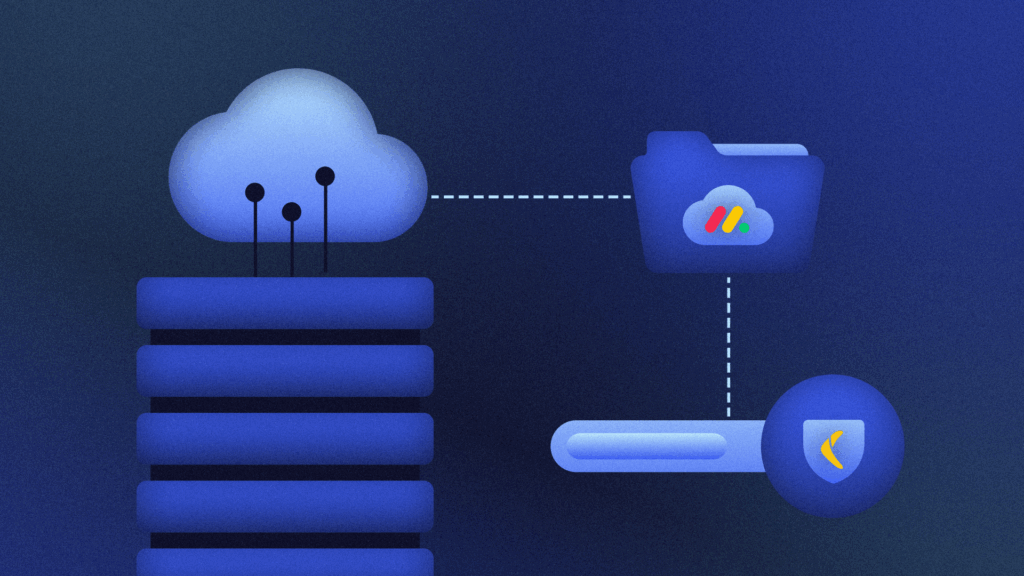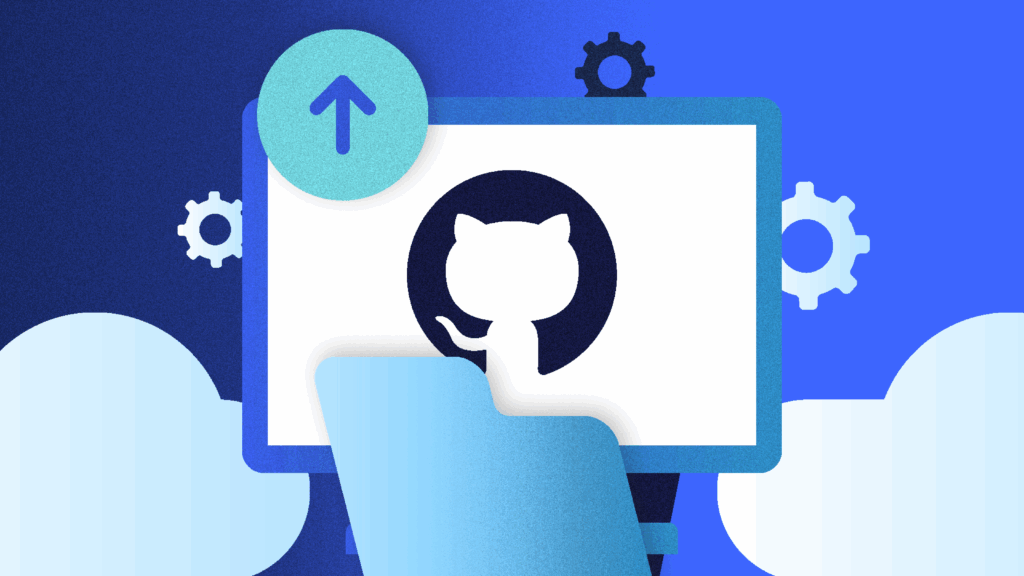In today’s data-driven digital world, data loss is a very serious problem. Consider how much data we each generate on a personal level—and then try to imagine what that looks like multiplied by thousands or even millions of people.
Taken in this context, data loss prevention ought to be a high priority for any company. Even the slightest error could prevent systems from working properly and might even impact business continuity. Downtime is costly, so data loss protection is a critical concern.
All businesses need to protect themselves from data loss, and that’s what we’re going to talk about today.
What is Data Loss Prevention?
Data loss prevention, also known as DLP or data loss protection, is a software strategy used by most businesses today. DLP encompasses a set of tools and best practices designed to protect an organization’s data from loss, corruption, or unauthorized access by employees or anyone outside the network.
One of the most significant components of DLP is in classifying data and applying policies, many of which are driven by compliance regulations like the GDPR, HIPAA, or PCI-DSS. If the DLP software detects policy violations, it initializes a remediation process, including enforcing or imposing encryption, alerts, and data isolation to prevent sharing, downloading, or transferring sensitive data out of the network.
Data loss prevention and protection solutions are also used to monitor access and activity within the system, such as through email or instant messaging. By doing so, organizations mitigate the risk of accidental or intentional exposure of sensitive data beyond authorized channels. If a leak or breach is detected, the DLP system applies pre-set protocols to encrypt, isolate, and protect company data, even after it’s left the system.
Gartner estimates that 90% of all businesses will have implemented a DLP strategy by the end of 2021, which is a significant and fairly recent gain when you consider only 50% of companies were doing so in 2017.
Why is Data Loss Prevention Important?
Data loss prevention is a critical business practice today. From health records to payment card information and personally identifiable customer information, any data loss could be disastrous. There are stringent international laws governing data protection and data privacy. Should a breach occur, an organization could be liable for millions of dollars in fines—and that’s just the beginning.
If data loss happens for any reason, companies face loss of brand reputation and could be forced to cease operations.
Even if the data loss was not connected to any personally identifiable information, it might impact a company’s ability to operate. For example, something as innocent as an accidentally deleted file could prevent an ecommerce website from working correctly. As a result, people would not be able to purchase items, and they would probably jump ship and take their money elsewhere.
Another critical barrier to data protection is that most employees today use their own devices, and many are working from home. It’s common to use multiple communication channels to send and receive data using shared online drives, instant messaging, email, productivity apps, SMS, social media, and the list goes on. Data could be stored anywhere, on a laptop, desktop, a mobile phone, in legacy enterprise systems, the cloud, removable drives, and more. Inadequate visibility increases the risk of data loss and makes data protection that much more urgent.
How Does Data Loss Prevention Work?
In general, DLP is divided into two categories — enterprise DLP and integrated DLP. Enterprise DLP is a dedicated, comprehensive, standalone solution that addresses the complex needs of today’s enterprise. Enterprise DLP is packaged into software for servers, desktops, and virtual appliances to monitor email and networks.
Integrated DLP is a bit more basic and designed to work with existing cybersecurity tools. The primary focus of integrated DLP is to enforce policies, ensure compliance, and prevent unauthorized users from accessing certain digital assets. Integrated DLP is used only on secure web gateways, secure email gateways, enterprise content management systems, and various data classification and discovery tools.
DLP tools inspect and analyze content and perform contextual analysis of data sent through email, messaging apps, on managed devices, in motion over the network, at rest in local drives and servers, and/or in cloud servers and storage. Data protection rules are applied, and data is encrypted or isolated from movement beyond allowed systems based on those rules.
Do I Need Data Loss Prevention?
Nearly half of all users have lost data in the cloud. According to our 2020 Data Protection Survey Report, and 8% of those who had lost data could not recover. Almost 30% of these companies reported it took 25 hours to get their systems back online—that’s more than an entire day.
When you think about how your business operates and what’s riding on your online systems, that’s a significant amount of time—and time is money! So, if you depend on your online assets to operate or do any business online whatsoever, data loss protection should be a priority.
But the need for data loss prevention does not rest solely with ecommerce. Financial services, healthcare organizations, or companies that have distributed teams all rely on digital data to operate. As such, they need robust data protection and data loss prevention protocols in place to ensure their continuity.
When you consider today’s data privacy compliance mandates, our increasing dependence on cloud computing and third-party software-as-a-service (SaaS), and the evolving threat environment, that ought to be enough of a rationale. But there’s more.
We’re producing and handling more data than ever, and those volumes are growing; therefore, there is more to steal. Stolen data is worth a lot on the dark web, where malicious actors can purchase the information and use it for their own purposes. It doesn’t help that the world is facing a severe shortage of cybersecurity talent.
It all boils down to this: no matter what business you’re in or where you’re located in the world, you need data loss prevention and data loss protection. DLP tools make that possible, providing you with advanced solutions that help protect your data against loss, corruption, and disaster in whatever form it takes.
Data Loss Prevention Best Practices
Data loss prevention solves four common objectives: data loss protection, compliance, data loss prevention, and data visibility. DLP also addresses various other problems, including internal threats, SaaS data security, user activity analysis, entity analysis, and advanced threat detection.
Here are a few data loss prevention best practices, many of which you can implement immediately.
1. Enforce a centralized data loss protection protocol.
Deploy the system and DLP best practices throughout the enterprise. Most data loss prevention initiatives fail due to a lack of consistency. When everybody is on board, it’s easier to maintain control.
2. Enlist a DLP specialist.
Data loss prevention in the enterprise is not a simple task. It is advisable to work with a data loss protection specialist to help you establish policies and deploy the right DLP tools. Some data protection legislation (like the GDPR) requires organizations to have data security specialists on staff or on contract.
3. Classify your data.
Before you can deploy a data loss prevention strategy, you’ll need to classify both your structured and unstructured data. Confidential data, internal data, personally identifiable data, financial data, intellectual property, and internal data are just a few categories. You will then use these categories to establish policies.
4. Establish policies.
Create policies for handling your categories of data. DLP tools generally apply pre-set rules based on regulatory standards for handling those types of data. Those rules can then be customized to the organization’s needs. For example, you might want to prevent employees from downloading unapproved documents or software. Or perhaps they’ll get a pop-up asking them to encrypt a file when sending an attachment that contains sensitive data. Or the system could redirect the email to a manager who would take it from there.
5. Implement data loss prevention in stages.
Data loss prevention is a long-term practice that will evolve over time. As your company grows and your data needs change, you may need to adapt some of your DLP policies to align with those changes. In best practice, implement changes in phases to ensure a successful deployment.
6. Make employee education a priority.
Employee awareness and organizational adoption are critical to any data loss prevention strategy. Provide ongoing training, tips, webinars, and coaching to ensure compliance. Reward data loss prevention champions and consider penalties for non-compliance as a deterrent.
7. Create a comprehensive disaster recovery plan.
Data loss protection is just one component of a comprehensive disaster recovery plan (DRP). A solid DRP will ensure your business continuity no matter what happens. From malicious attacks to extreme weather, loss of premises, or system failure, a DRP will help you get back up and running quickly.
Data Loss Prevention Tools and Solutions
No matter what industry niche you operate in, data loss prevention is a primary concern. However, business continuity and reputation are assured with the right data loss prevention tools and policies in place.
Data protection is a complex topic, but DLP tools support the process and make it easy for you to manage. There are many such tools on the market, but it’s important to consider your needs, budget, and workflows as every company is different.
Think of all the ways data leaves your organization and all the endpoints you need to protect. You should also think about how your employees access and share company files. You want a solution that provides data protection without hindering or slowing down their workflows. Most modern DLP tools can detect and respond to risk in addition to preventing it.
Look for a DLP solution that offers:
- Endpoint protection
- Compliance
- Protects personal information
- Intellectual property protection
- Insider threat protection
- Data visibility
And to ensure your continuity, no matter what happens, your devices, drives, systems, and all the data they contain must be backed up regularly. If disaster strikes, a backup allows you to quickly restore your systems, maintain continuity, and avoid costly downtime.
Rewind offers comprehensive and continuous data loss prevention solutions for Shopify, BigCommerce, QuickBooks Online, GitHub, JIRA, Confluence and more. Rewind’s dedicated backup and recovery apps integrate directly with the platform, allowing you to backup and recover all of your data including dependencies, metadata, images, theme code, and more.



